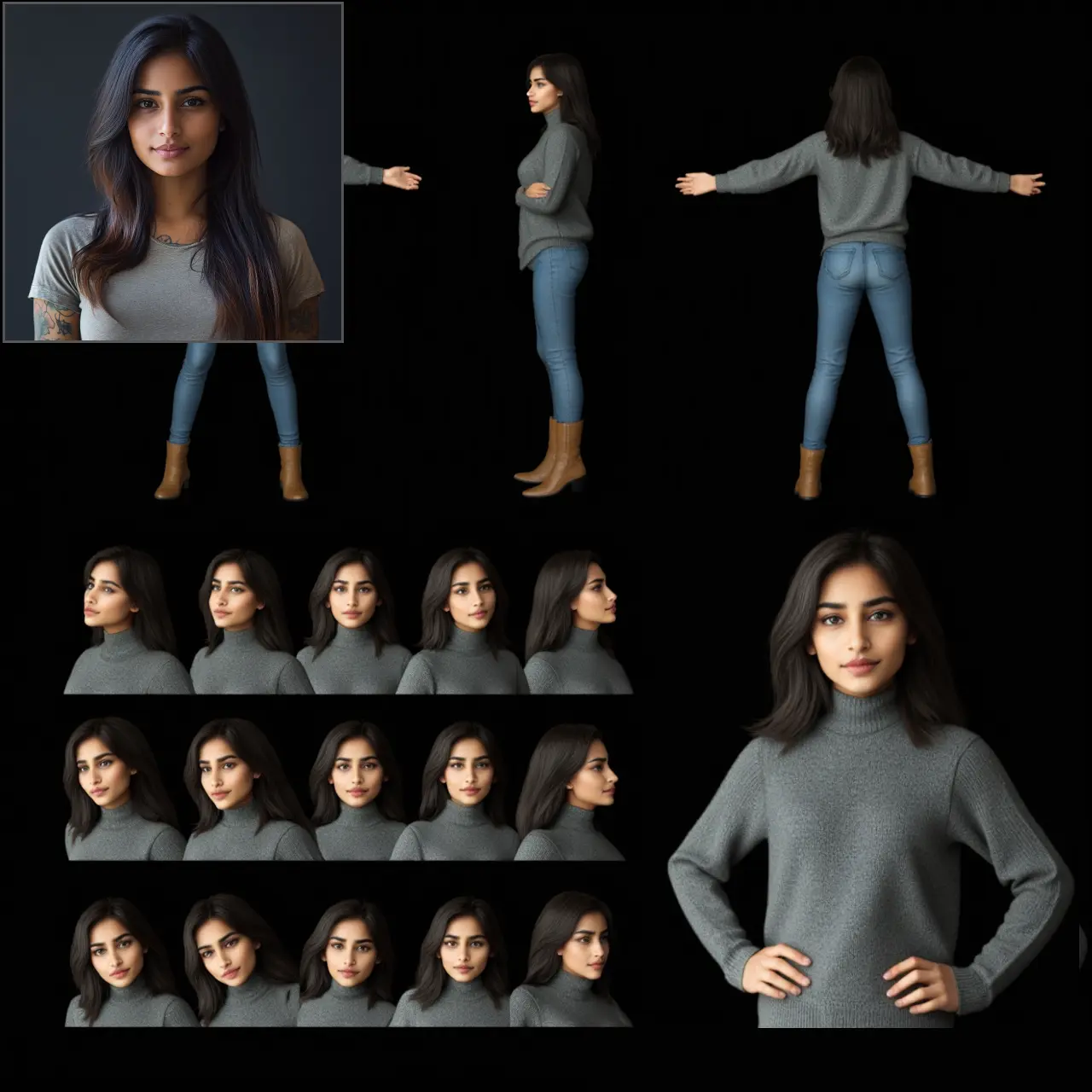ComfyUI Node: Processor
ZuellniPickScoreProcessor
Categoryzuellni/pickscore
Zuellni (Account age: 807days) Extension
ComfyUI PickScore Nodes Latest Updated
2024-09-08 Github Stars
0.03K
How to Install ComfyUI PickScore Nodes
Install this extension via the ComfyUI Manager by searching for ComfyUI PickScore Nodes- 1. Click the Manager button in the main menu
- 2. Select Custom Nodes Manager button
- 3. Enter ComfyUI PickScore Nodes in the search bar
Visit ComfyUI Online for ready-to-use ComfyUI environment
- Free trial available
- 16GB VRAM to 80GB VRAM GPU machines
- 400+ preloaded models/nodes
- Freedom to upload custom models/nodes
- 200+ ready-to-run workflows
- 100% private workspace with up to 200GB storage
- Dedicated Support
Processor Description
Specialized node processing images and text using CLIP model for relevance scoring and ranking in creative workflows.
Processor:
The ZuellniPickScoreProcessor is a specialized node designed to process and evaluate images and text inputs using a pre-trained CLIP model. This node is particularly useful for AI artists who want to analyze and score the relevance of images based on textual descriptions. By leveraging the powerful capabilities of the CLIP model, the ZuellniPickScoreProcessor can generate embeddings for both images and text, normalize these embeddings, and compute similarity scores. These scores can then be used to rank images according to their relevance to the provided text, making it an invaluable tool for tasks such as image retrieval, content-based image ranking, and enhancing creative workflows.
Processor Input Parameters:
model
This parameter expects a pre-trained CLIP model, which is used to process and generate embeddings for the images and text. The model should be loaded and set up correctly to ensure accurate processing. The model parameter is crucial as it defines the underlying architecture and weights used for generating the embeddings.
images
This parameter accepts a list of images that need to be processed and scored. The images are converted into tensors and normalized before being fed into the model. The quality and relevance of the images directly impact the scoring results, so it is important to provide clear and high-quality images.
text
This parameter takes a string input, which is the textual description used to evaluate the relevance of the images. The text is tokenized, padded, and truncated to a maximum length of 77 tokens before being processed by the model. The accuracy of the scoring depends on how well the text describes the desired attributes of the images.
threshold
This parameter is a floating-point value that sets the minimum score threshold for selecting relevant images. The default value is 0.0, with a minimum of 0.0 and a maximum of 1.0. Adjusting the threshold can help filter out less relevant images and focus on those that closely match the text description.
limit
This parameter is an integer that defines the maximum number of top-scoring images to return. The default value is 1, with a minimum of 1 and a maximum of 1000. Setting an appropriate limit helps manage the number of results and ensures that only the most relevant images are considered.
latents (optional)
This optional parameter accepts latent representations of the images, which can be used for further processing or analysis. Providing latents can enhance the node's functionality by allowing additional operations on the image embeddings.
masks (optional)
This optional parameter accepts masks for the images, which can be used to focus on specific regions of the images during processing. Masks can help improve the accuracy of the scoring by isolating relevant parts of the images.
Processor Output Parameters:
SCORES
This output parameter provides a string representation of the similarity scores for the images. The scores indicate how well each image matches the provided text description, with higher scores representing better matches.
IMAGES
This output parameter returns the list of images that meet the specified threshold and limit criteria. The images are sorted based on their relevance scores, allowing you to easily identify the most relevant images.
LATENTS
This output parameter returns the latent representations of the selected images. These latents can be used for further processing or analysis, providing additional insights into the image embeddings.
MASKS
This output parameter returns the masks for the selected images, if provided. The masks can be used to focus on specific regions of the images in subsequent processing steps.
Processor Usage Tips:
- Ensure that the CLIP model is correctly loaded and set up before using the node to avoid processing errors.
- Provide clear and high-quality images to improve the accuracy of the scoring results.
- Use descriptive and concise text to ensure that the text embeddings accurately represent the desired attributes of the images.
- Adjust the threshold parameter to filter out less relevant images and focus on those that closely match the text description.
- Set an appropriate limit to manage the number of results and ensure that only the most relevant images are considered.
Processor Common Errors and Solutions:
"Model not loaded"
- Explanation: This error occurs when the CLIP model is not correctly loaded or set up.
- Solution: Ensure that the model is properly loaded and set up before using the node. Check the model path and device configuration.
"Invalid image input"
- Explanation: This error occurs when the provided images are not in the correct format or are of poor quality.
- Solution: Verify that the images are in the correct format and of high quality. Ensure that the images are clear and relevant to the text description.
"Text input too long"
- Explanation: This error occurs when the provided text exceeds the maximum length of 77 tokens.
- Solution: Truncate the text to a maximum of 77 tokens to ensure that it can be processed by the model. Use concise and descriptive text.
"Threshold out of range"
- Explanation: This error occurs when the threshold parameter is set outside the valid range of 0.0 to 1.0.
- Solution: Adjust the threshold parameter to a value within the valid range of 0.0 to 1.0.
"Limit out of range"
- Explanation: This error occurs when the limit parameter is set outside the valid range of 1 to 1000.
- Solution: Adjust the limit parameter to a value within the valid range of 1 to 1000.
Processor Related Nodes
RunComfy is the premier ComfyUI platform, offering ComfyUI online environment and services, along with ComfyUI workflows featuring stunning visuals. RunComfy also provides AI Models, enabling artists to harness the latest AI tools to create incredible art.


